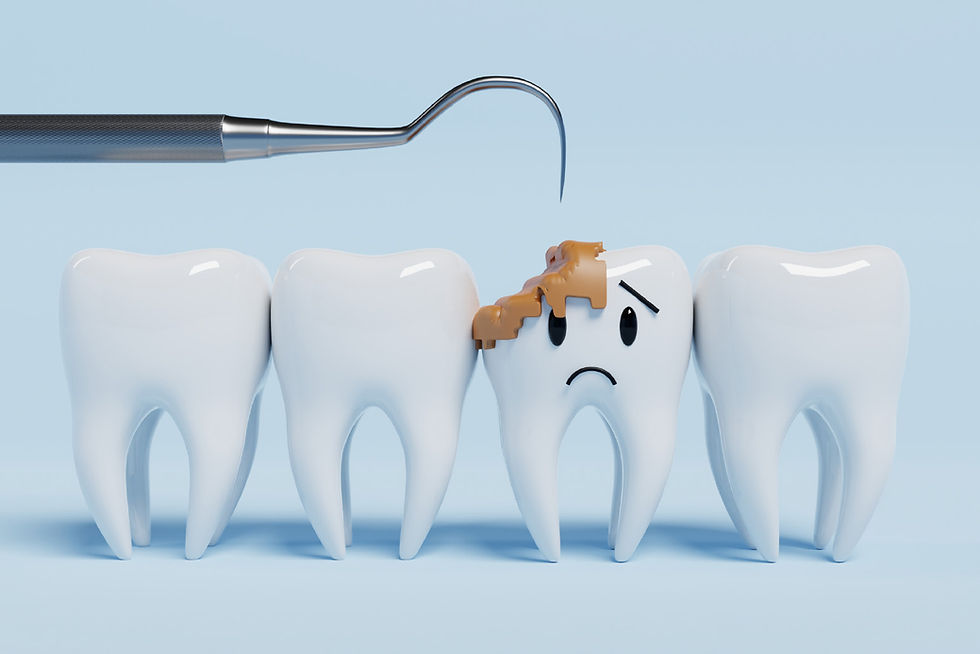What is a dental cavity?
- scarver5
- Jun 4
- 2 min read

At the most basic level, a dental cavity is a hole in a tooth. These holes can range from very small or incipient (developing), to quite large and encompassing the entire tooth. Cavities can grow on baby teeth and permanent teeth alike. To understand how cavities form, it is important to first understand the structure or anatomy of the tooth.
Think of a tooth like an M&M candy with a peanut inside. The colored coating of the M&M represents the hard enamel layer on the outside of the tooth. The milk chocolate represents the dentin layer, which occupies a majority of space inside of the tooth. The peanut represents the region where the blood and nerves live called the pulp. The pulp extends from the top of the tooth called the crown, to the tips of the roots connecting the tooth with the surrounding bone and gums. The pulp tissue is the part of the tooth that is alive.
The outside layer of a tooth is a crystal structure called enamel. Enamel is the hardest tissue in the body. This raises the question, if the enamel is so hard, how can cavities form at all? In the presence of acid, the crystal structure of enamel breaks down over time. Essentially the process goes like this: We eat food and some of it gets stuck on our teeth, especially in the grooves of the back teeth or in between teeth that touch. The stuck food or plaque provides nutrition for the bacteria which release
acid in the same area. Acid is essentially a byproduct from the metabolism of the plaque by the bacteria.
The actual cavity formation can be considered as a continuum. The longer the bacterial acid stays in one place, the deeper it can penetrate into the tooth and the hole begins to grow. Initially only a breakdown of the outermost layer of the enamel occurs. At this stage if the process is interrupted, the cycle can be stopped. However, if the food, bacteria and acid stay in the same spot on a tooth, destruction of the crystal structure continues accelerating the breakdown of the tooth. Once the acid breaks through the enamel and reaches the dentin, the process accelerates as dentin dissolves faster than enamel. This is because the dentin structure is composed of microtubules that act as superhighways for the bacteria and acid to move into and demineralize the teeth faster.
As the cavity grows, it undermines the internal structure of the tooth and eventually the tooth breaks apart because it is being hollowed out by the growing cavity. This corresponds to the first complaint of a tooth hurting. At this stage, the tooth will hurt when food is stuck in the hole and will feel better the moment it is brushed out. If the bacteria travel all the way to the inside of the tooth where the nerves and blood vessels live, they can create an infection leading to an abscess. In this situation, the tooth hurts suddenly and nothing makes it feel better. Generally, if this happens antibiotics are necessary to
stop the process and discomfort.
Brought to you by:
Dr. Cate Quas
Bend | 2565 NE Butler Market Rd Bend, OR 97701
541-317-1887
Redmond | 1429 SW 15th Street Redmond, OR 97756
541-923-1300





Comments